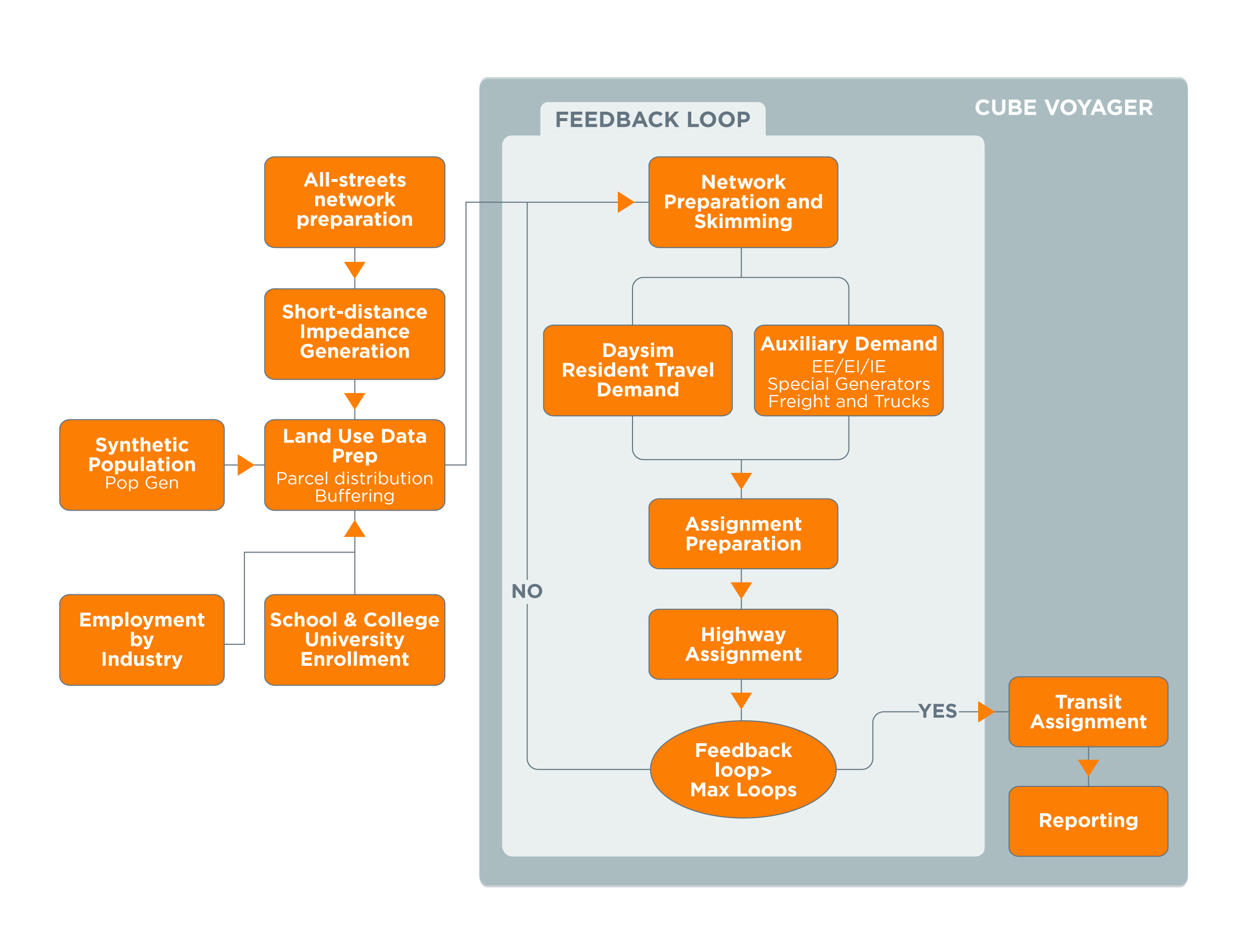3.1 Process Flow
The NERPM-AB model system builds upon the previous version of the model NERPM42, which was a trip-based model system. The Cube framework and user interface remain the same. Also, network processing, port freight trips, internal-external (IE), external-internal (EI), external-external (EE), and local truck trips remain the same. Essentially, the activity-based model system replaces the trip generation, trip distribution, and mode choice components of the trip-based model system with a more detailed set of model components that predict regional residents’ activity generation, destination, mode, and time-of-day choices, and includes additional models such as household vehicle availability. These predictions are combined with forecasts of auxiliary demand (truck, IE, EI trips etc.), and are assigned to roadway and transit networks to produce estimates of network performance. The model system is executed iteratively with feedback in order to achieve a stable, equilibrated result. Figure 3‑1 illustrates the overall model system flow.
FIGURE 3-1 NERPM-AM V1.0 MODEL PROCESS FLOW
The activity-based model system requires the preparation of some additional data that are not required by the trip-based model system, which are prepared outside the Cube Voyager envelope/box in the figure. This additional data preparation is primarily related to the additional spatial and socioeconomic data that is needed by the ABM. The model system uses “all streets” based network impedances when calculating the accessibilities. Land use and buffer variables are developed at the microzone level. A synthetic population that represents the region’s households and persons and matches key demographic distributions is created and allocated to microzones, and a number of other key inputs are prepared such as the information about regional in-commuting and out-commuting, the location of regional park-and-ride facilities, and initial estimates of network performance, or “skims”. Once all the inputs are prepared, the iterative model system run can be executed. There are two primary types of demand components in the model system: DaySim and the auxiliary models. DaySim predicts the daily activity patterns of all regional residents when they travel within the region. The auxiliary models predict other components of the overall travel demand, such as freight demand and external demand. DaySim and auxiliary-model demand are combined and assigned to highway and transit networks, and revised estimated of network impedances are generated. These revised impedances are then fed back to into DaySim and the auxiliary models to produce new demand estimates. Successive averaging is used in order to achieve a stable equilibrated result. After three system/global iterations, the final demand estimates are produced and all the demand is assigned to the appropriate roadway or transit networks by time of day. The final step of the model involves producing detailed reports which summarize model outputs.
